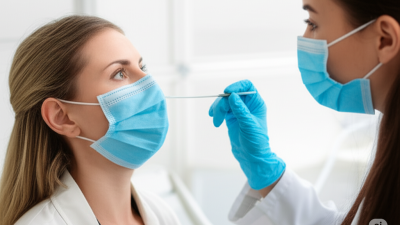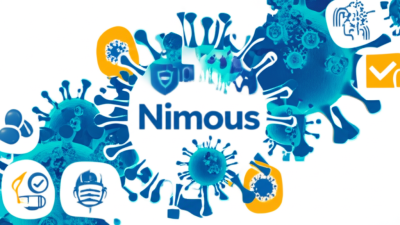Introduction
Chikungunya is a viral disease that has gained global attention due to its rapid spread and painful symptoms. Transmitted by mosquitoes, this disease can leave individuals with severe joint pain, fever, and fatigue. In this post, we’ll explore everything you need to know about Chikungunya, from its transmission and symptoms to diagnosis, treatment, and prevention. Whether you’re looking to protect yourself or simply stay informed, this guide will provide you with the essential details about this mosquito-borne menace.
What is Chikungunya?
Chikungunya is a viral infection caused by the Chikungunya virus (CHIKV). First identified in Tanzania in 1952, it has since spread to over 100 countries across Africa, Asia, Europe, and the Americas. The name “Chikungunya” comes from a word in the Makonde language, meaning “to become contorted,” reflecting the severe joint pain that is a hallmark of the disease.
How is Chikungunya Transmitted?
Chikungunya is primarily spread through the bite of infected mosquitoes, specifically the Aedes aegypti and Aedes albopictus species. These same mosquitoes are also responsible for transmitting dengue and Zika. The transmission cycle begins when a mosquito bites an infected person and then spreads the virus to others through subsequent bites. These mosquitoes are most active during the day, making daytime protection a key factor in prevention.
Symptoms of Chikungunya
The incubation period for Chikungunya is typically 3-7 days after a mosquito bite. Common symptoms include:
- High fever (often exceeding 102°F or 39°C)
- Severe joint pain (arthralgia), especially in the hands, wrists, ankles, and knees
- Muscle pain
- Headache
- Nausea
- Fatigue
- Rash (usually appearing 2-5 days after the onset of fever)
The intense joint pain can be debilitating and may persist for weeks or even months. While most people recover fully, some experience lingering joint discomfort.
How is Chikungunya Diagnosed?
Diagnosing Chikungunya can be challenging because its symptoms resemble those of other mosquito-borne diseases like dengue and Zika. Doctors typically use:
- Clinical evaluation: Assessing symptoms and travel history to affected regions.
- Laboratory tests: RT-PCR (reverse transcription-polymerase chain reaction) or serological tests to detect antibodies and confirm the virus.
Early diagnosis helps manage symptoms effectively, as there’s no specific cure.
Treatment Options for Chikungunya
There is no antiviral medication for Chikungunya, so treatment focuses on symptom relief:
- Rest: Allowing the body to recover naturally.
- Hydration: Drinking plenty of fluids to prevent dehydration.
- Pain relief: Using acetaminophen or ibuprofen to manage fever and pain.
- Avoiding aspirin and NSAIDs: These can increase bleeding risk, especially if dengue is suspected.
In severe cases, hospitalization may be needed to address complications like dehydration or extreme pain.
Preventing Chikungunya: Key Strategies
Since no vaccine exists, preventing mosquito bites is the best defense. Here’s how:
- Use insect repellent: Choose products with DEET, picaridin, or oil of lemon eucalyptus.
- Wear protective clothing: Opt for long-sleeved shirts, long pants, and socks.
- Use mosquito nets: Sleep under nets in high-risk areas.
- Eliminate standing water: Mosquitoes breed in stagnant water, so empty containers like flowerpots and buckets regularly.
Community efforts, like mosquito control programs, also help reduce outbreaks.
Is There a Vaccine for Chikungunya?
Currently, there is no licensed vaccine for Chikungunya, though several are in development and undergoing clinical trials. Until a vaccine is available, prevention remains the primary strategy.
Global Statistics and Prevalence
Chikungunya is a growing public health concern, with cases reported in over 100 countries. The World Health Organization (WHO) reported over 300,000 suspected cases in the Americas in 2019 alone. It’s most common in tropical and subtropical regions, but climate change and global travel could expand its reach.
Recent Outbreaks and News
Chikungunya has caused significant outbreaks in recent years:
- 2013-2014: Over a million cases were reported in the Caribbean and Latin America.
- 2020-2021: Surges occurred in Africa and Southeast Asia.
Researchers are also studying how climate change might worsen the spread by creating ideal conditions for Aedes mosquitoes.
Chikungunya vs. Dengue vs. Zika
| Feature | Chikungunya | Dengue | Zika |
|---|---|---|---|
| Key Symptom | Severe joint pain | High fever + bleeding | Mild fever + rash |
| Complications | Chronic arthritis | Hemorrhagic shock | Microcephaly (in pregnancy) |
| Vaccine | None | Limited availability | None |
Conclusion
Chikungunya is a serious mosquito-borne disease with no specific treatment or vaccine, making awareness and prevention critical. By understanding its symptoms, transmission, and preventive measures, you can protect yourself and your community. Stay vigilant, avoid mosquito bites, and keep informed to combat this global health challenge.





